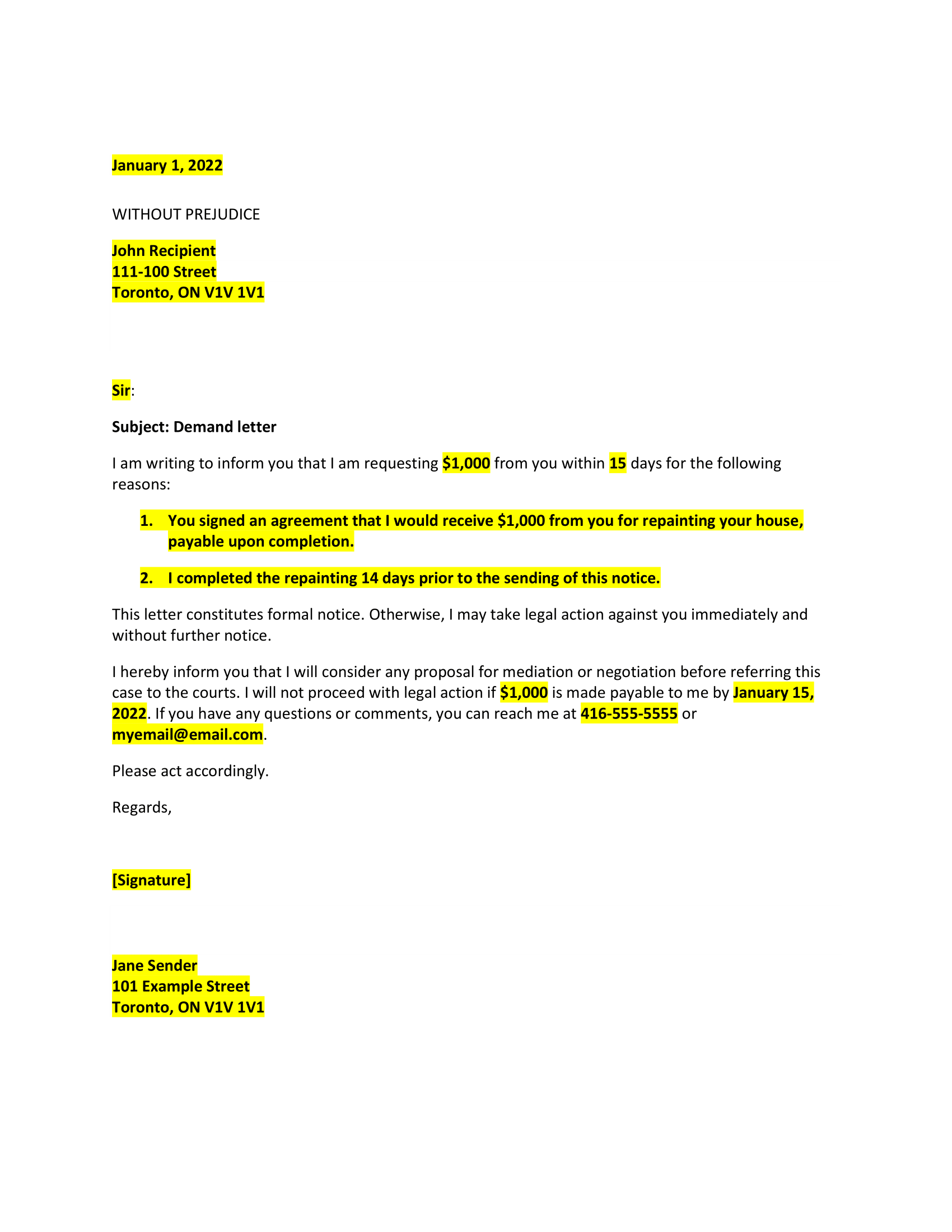What is a demand letter?
A demand letter (also called a “lawyer’s letter” or “formal notice”) is a document seeking to resolve a dispute over a payment or obligation owed by one party to another, in a particular way and within a given time frame. It is a way of resolving disputes without going to court. For some legal proceedings, a formal notice is required.
In the case of latent defect, the complainant must give the defendant written notice before sending a demand letter.
When is it appropriate to write one?
If you are owed payment or services from another party, but they refuse to pay or provide service, you can write a demand letter. This letter simply asks for payment or fulfilment of services.
You may also write a demand letter if someone owes you for damaging your property, for example. Or, perhaps you’ve paid a contractor to renovate your kitchen and they haven’t finished the job.
Who can write a demand letter?
While you can certainly write your own letter, a letter sent from a law firm will carry more weight—especially if the dispute is complicated or involves a large sum of money. A lawyer will also be able to use their legal experience to make sure the letter includes all the relevant points.
Regardless of who writes the letter, you must send it by registered mail. You also need to keep a copy of the document, along with confirmation of delivery in order to prove that the recipient received the formal notice.
What information should be included in a demand letter?
A demand letter should include the following information:
- The date and the complainant’s name and address
- The recipient’s name and address
- The heading “without prejudice”, which protects you regarding the statements you make in the letter and allows you to add information or details if the dispute eventually goes to court
- The phrase “formal notice” to ensure that the recipient is aware of its importance
- The phrase “default notice”
- How the letter is being sent (“by bailiff”, by “registered mail”)
- A summary of the dispute, including dates
- The complainant’s claim
- How the defendant can respond to the demand
- A time limit for settling the dispute (a period of 10 days is reasonable)
- The complainant’s contact information and signature
Remember to be polite and respectful in the letter; an aggressive and threatening tone will not help resolve the issue. In addition, make sure that the information you provide in the letter is accurate and without baseless assumptions—the letter could be used against you in court! Do not ask for more than what you are owed.
How should I send a demand letter?
You may use any method to send the letter, as long as you can prove that the other party received it. The most common method used is by registered mail, but you can also send it by bailiff or email, or deliver it in person.
If you deliver the letter in person, make sure the recipient confirms he or she received it by signing the document. You can also deliver the letter with a witness present.
Commonly asked questions
How much does a demand letter cost?
If you write it yourself, you’re looking at around $20 for postal and administrative fees. If you use a lawyer, the estimated cost is $160—or more. These costs are not recoverable, even if you win the dispute.
What happens after the demand letter is sent?
Once you have successfully prepared and sent the demand letter, there are a few possible outcomes:
- The demand is met. The other party accepts your demands and provides payment.
- The other party makes a counteroffer. The other party is willing to provide partial payment. You do not have to accept the counteroffer and you may present a counteroffer of your own.
- The demand is rejected. The other party refuses to pay or provide services. In this case, you may have no other recourse but to file a lawsuit.
Looking for more helpful templates? Visit our Template resource centre to find ready-to-use templates for a range of important documents. Or, get an online quote in under 5 minutes and find out how affordable personalized home insurance can be.


